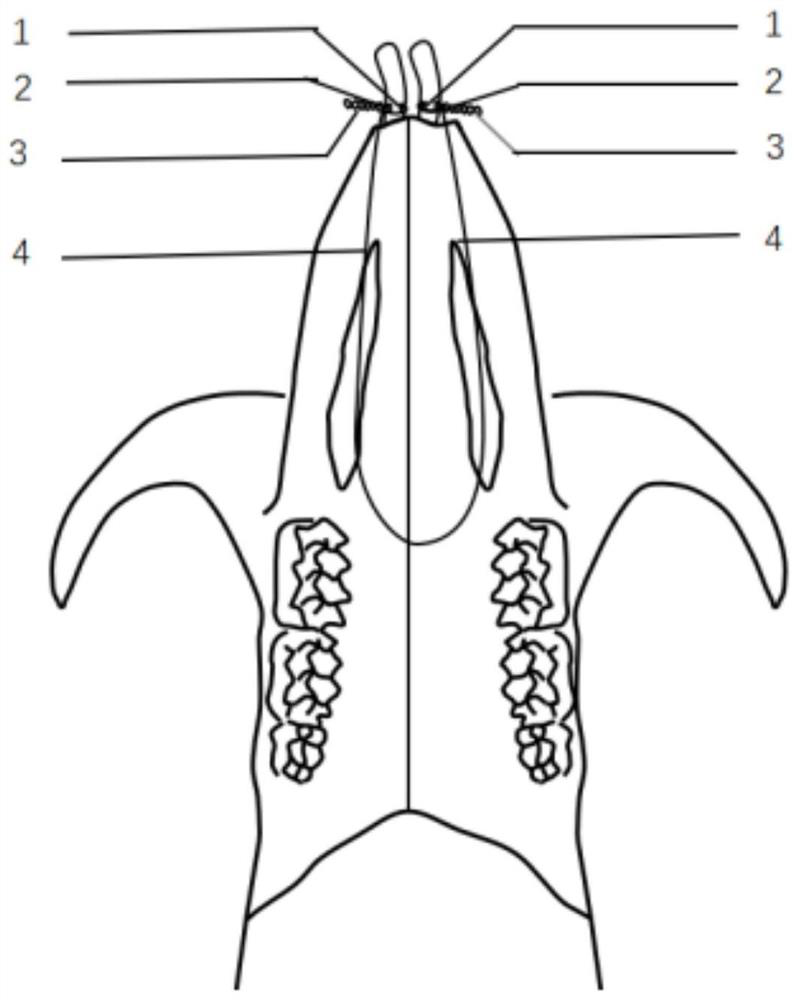Murine animal experiment method for orthodontic distal movement of central incisor of upper jaw
An animal experiment and orthodontic technology, applied in the field of animal experiment, can solve the problems of small contact area, large tissue damage, difficult to repeat the experiment, etc., to achieve the effect of uniform contact area, large contact area and reduction of shedding rate
- Summary
- Abstract
- Description
- Claims
- Application Information
AI Technical Summary
Problems solved by technology
Method used
Image
Examples
Embodiment Construction
[0030] The present invention will be further described below in conjunction with the embodiments and the accompanying drawings.
[0031] EXAMPLES Experimental method of orthodontic distal movement of maxillary central incisors in rats.
[0032] To establish an animal model of mouse orthodontics with distally moved maxillary central incisors, the steps are as follows:
[0033] (1) Preparation of the orthodontic device for moving the maxillary central incisor distally:
[0034] (1) The mice were anesthetized and fixed by intraperitoneal injection of pentobarbital sodium, and the limbs and head of the mice were fixed in the supine position;
[0035] (2) Making individualized retention grooves for anchorage teeth and mobile teeth 1 Make a wax model on the model according to the labial side of the mouse maxillary central incisor.
[0036] (2) Establishment of the animal model of orthodontic distally moving maxillary central incisors. Mice were generally anesthetized. The limbs an...
PUM
 Login to View More
Login to View More Abstract
Description
Claims
Application Information
 Login to View More
Login to View More - R&D
- Intellectual Property
- Life Sciences
- Materials
- Tech Scout
- Unparalleled Data Quality
- Higher Quality Content
- 60% Fewer Hallucinations
Browse by: Latest US Patents, China's latest patents, Technical Efficacy Thesaurus, Application Domain, Technology Topic, Popular Technical Reports.
© 2025 PatSnap. All rights reserved.Legal|Privacy policy|Modern Slavery Act Transparency Statement|Sitemap|About US| Contact US: help@patsnap.com

